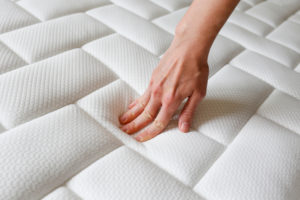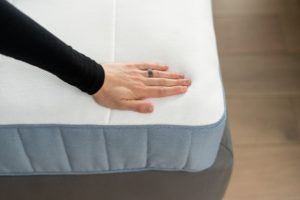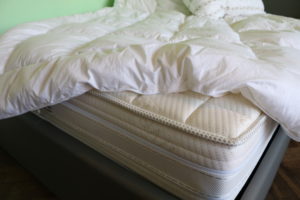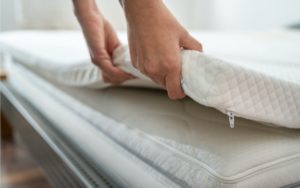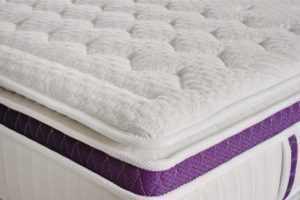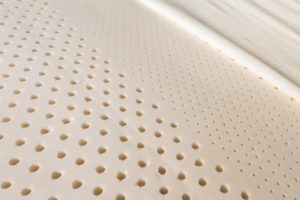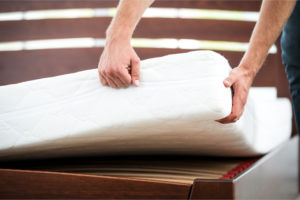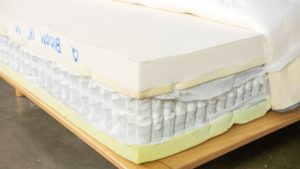Should You Flip or Rotate Your Mattress?
For decades, the common advice in the mattress industry was to rotate and flip your mattress regularly to help extend its lifespan and improve comfort. However, changes to the design of modern mattresses mean that this advice is no longer necessarily true. In the 21st century, should you flip or rotate your mattress?
The answer depends on the design of your specific mattress. Generally speaking, most mattresses should be rotated regularly, but should not be flipped. We’ll break down the basic guidelines for flipping or rotating mattresses, and explain how regular rotation or flipping can help extend the lifespan of your mattress.
Should You Flip Your Mattress?
Most mattresses should not be flipped. Unless the manufacturer specifically recommends otherwise, you should not flip your mattress.
The majority of modern mattresses are designed to be one-sided, meaning that their design is not conducive to flipping. The basic construction of most modern mattresses is as follows:
- At the bottom of the mattress, a thick, relatively firm support layer typically made of dense foam and/or metal springs makes up the “support core”
- On the upper level of the mattress, one or more layers of foam or other materials, covering various densities and firmness levels, make up the “comfort system”
- Topping the mattress is its cover, along with any sewn-in foams or other materials
This design works well to support the sleeper. The relatively cushy comfort system on top provides good contouring and comfort, while the denser underlying support core helps keep the body supported and the spine properly aligned throughout the night.
However, if you flip this design around, it simply doesn’t work as well. The support core generally feels too firm to rest on directly, and the comfort core does not provide enough support to keep the mattress in its proper shape.
If you flip a mattress that’s not designed to be flipped, you’ll end up with a less comfortable and less supportive bed. It will also cause the mattress to wear out quicker, and will likely lead to aches and pains for the sleepers.
With that said, there is an exception: Some mattresses are designed to be flippable.
Flippable beds feature designs that are double-sided. In some cases, they offer two distinct firmness levels. For example, a flippable all-foam mattress may feature one side with a 4 out of 10 firmness rating, with the other side offering a 6 out of 10 firmness rating. Other flippable mattresses have a single uniform firmness level, and are flippable to help extend their longevity.

Should You Rotate Your Mattress?
Most mattresses can be rotated. In many cases, this will help to protect the mattress from premature damage. Rotating helps to spread out the wear-and-tear that comes with sleeping in the same position on your mattress every night.
Areas of a mattress that are exposed to heavy pressure (typically around the hips and shoulders) tend to sag prematurely. If the mattress is rotated regularly, it is better able to withstand this pressure over time. Often this means that a regularly rotated mattress will outlast a non-rotated mattress somewhat, potentially by a year or more.
To find out how often you should rotate your mattress, check your owner’s manual. If you can’t find recommendations directly from the manufacturer, here are some general guidelines:
- Memory foam and latex mattresses should be rotated 1-2 times per year
- Newer innerspring mattresses should be rotated 1-2 times per year
- Older innerspring mattress should be rotated 2-5 times per year
However often you choose to rotate your mattress, try to keep it consistent. The idea behind rotating mattresses regularly is to switch around the areas where your body lays on the mattress, thereby spreading out the pressure points that may be subject to sagging. By rotating on a consistent schedule, you can minimize the risk of premature sagging in specific areas.
Keep in mind that some mattresses should not be rotated. This mostly applies to mattresses with a zoned comfort system. A zoned design will feature extra support where it’s needed most, along with a slightly softer feel elsewhere. As these mattresses are designed to target certain areas of the body with extra support, rotating them can result in a less comfortable, less supportive feel.
Rotating your mattress regularly may help to extend its useful lifespan. With that said, it’s still important to know when to replace your mattress. Even with diligent care and maintenance, most mattresses should be replaced every 6 to 8 years.














